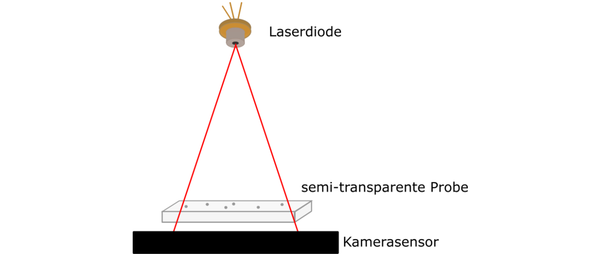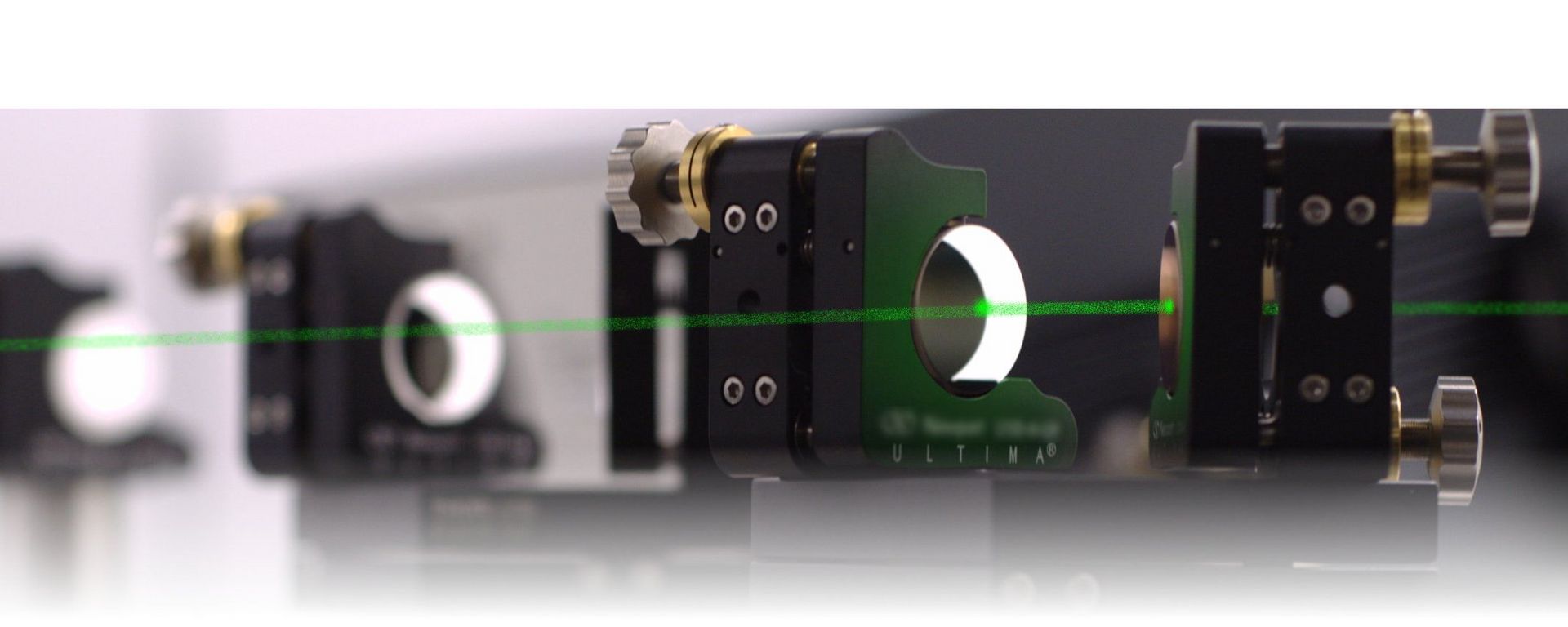Lensless holographic microscope
Microscopes enable us to see and investigate microobjects which would have otherwise been impossible to see with the naked eye. As a result, they are used in a very wide range of application fields. The lensless holographic microscope is a small, selfconstructed microscope on which the concept of inline holography is based. A light source, a pinhole in front of the light source, cover glass and a CCD camera are the components that are used to set it up. This coherent light in turn illuminates the cover glass on which the microobjects are examined (see Figure 1). The diffracted light from the microobjects is superimposed with the unaltered light that is transmitted through the cover glass. An interference pattern is produced which can then be recorded as a hologram by the CCD camera behind the cover glass (see Figure 2). By reconstructing this hologram, one gets the amplitude and phase diagrams of the microobject under investigation (see Figure 3).

Figure 1: Setup of the lensless holographic microscope
In comparison to the normal microscope, the lensless holographic microscope is a low cost alternative. It was first designed by researchers at the University of California, Los Angeles (UCLA) [1]. We have also built a prototype of this microscope in our department. One advantage of this microscope over the classic microscope is the fact that in addition to the amplitude, the phase information of microobjects can also be extracted. This allows for better studies to be carried out on phase objects such as biological cells. Another advantage is the fact that a larger area of the sample can be investigated at one time [2]. Furthermore, this microscope is very compact, robust and provides fast image acquisition, even in real-time. Also non-technical experts can use the lensless holographic microscope, due to the simple setup and its uncomplicated handling. The proposed scientific application fields of our lensless holographic microscope cover a large range from daily uses to scientific applications. It undergoes continuous development concerning its setup and different applications.

Figure 3: Reconstruction of the yeast particles, amplitude information left and phase information right
| Microscope | Resolution | Size (weight) | Costs | Field of view |
| Light microscope | from 0,2µm | big | >10000€ | small |
| Lensless holographic micrroscope | < 1µm | very small (about 95g) | <500€ | larg (about 24 mm²) |
Tab. 1: Comparison of light microscope with the lensless holographic microscope
Reference:
- [1] S. Seo, T.-W. Su, D. K. Tseng, A. Erlinger, and A. Ozcan, “Lensfree holographic imaging for on-chip cytometry and diagnostics.,” Lab on a chip, vol. 9, no. 6, pp. 777–87, Mar. 2009.
- [2] Adinda-Ougba, A., Koukourakis, N., Gerhardt, N. C., & Hofmann, M. R., „Simple concept for a wide-field lensless digital holographic microscope using a laser diode”, Current Directions in Biomedical Engineering, 1(1), 261-264, 2015.
Colleagues:

